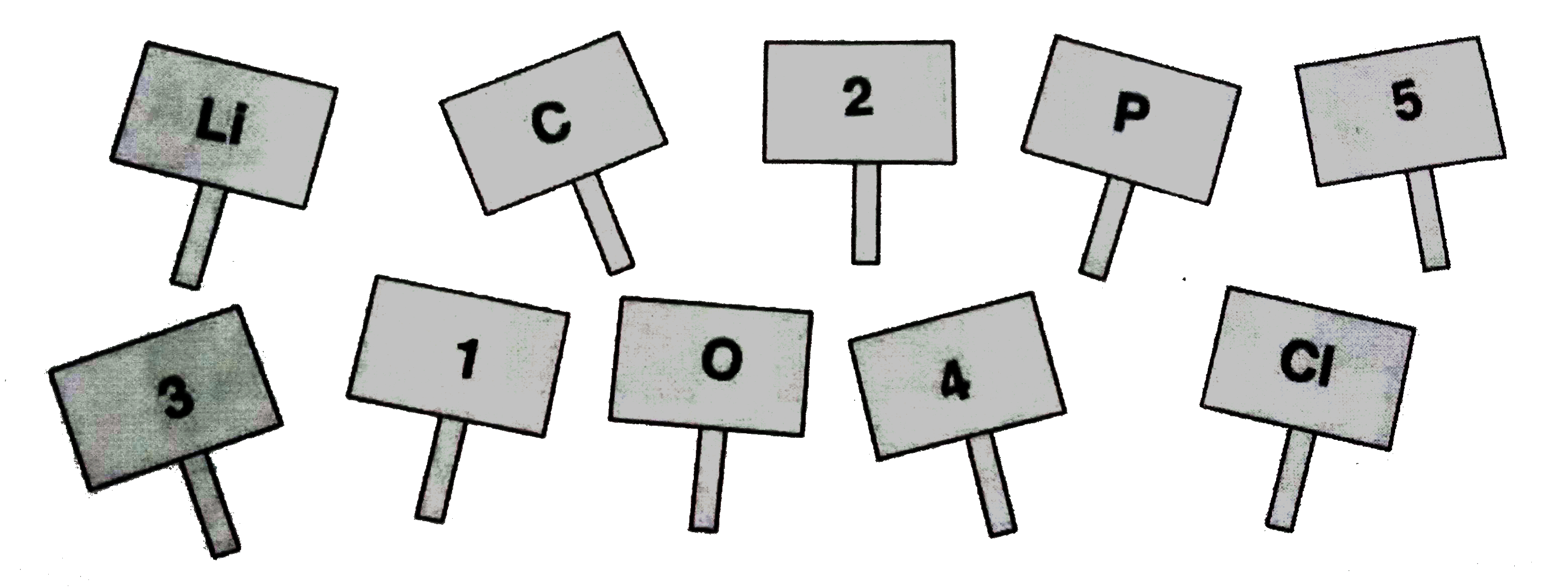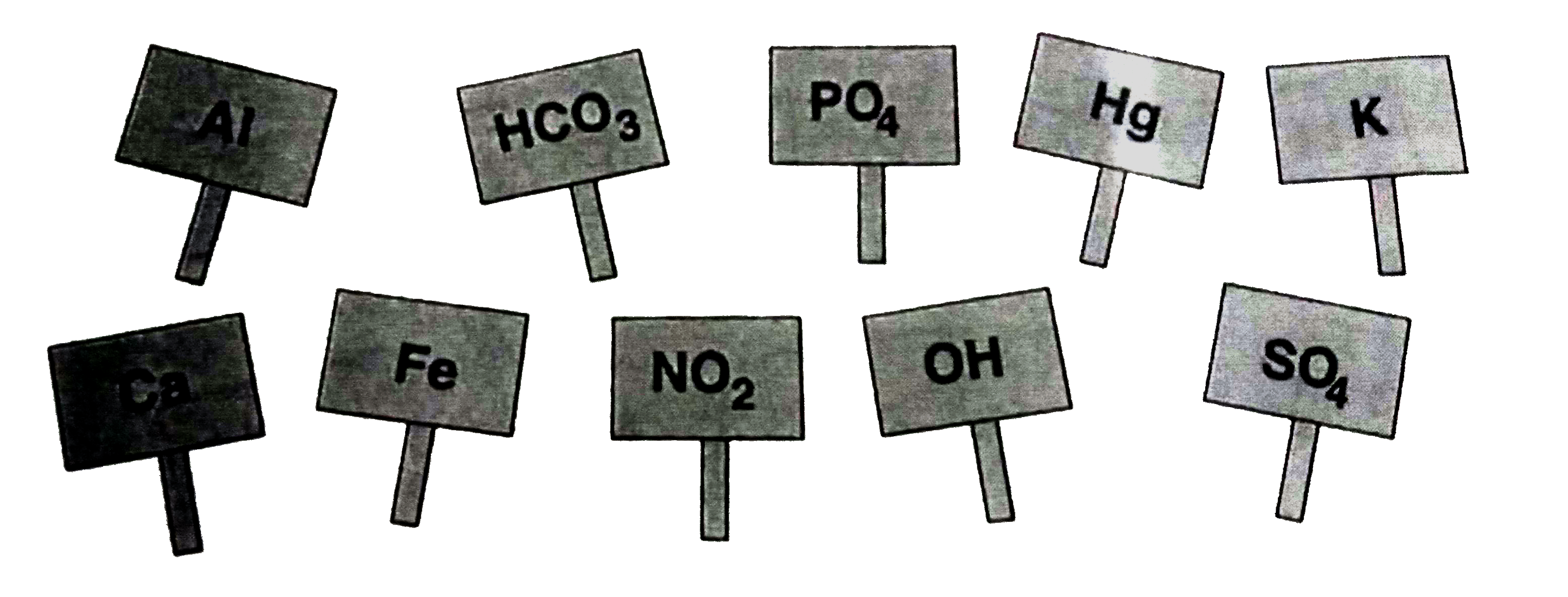The students of class IX have made placards showing the symbols of some elements and valencies of these elements. These placards somehow got mixed up as shown below :

On this basis of these placards the chemistry teacher, Mrs. Shanti, asked a student Vikas to answer the following questions :
(a) Choose the symbol of an element from among the placards which exhibits valencies of 3 and 5. What is the name of is the name of this element ? Is it a metal or a non-metal ?
(b) Choose the symbol of an element from the given placards which shows a valency of 2. What is the name of this element ? Is it a metal or a non-metal ?
(c) Work out the formula of the compound formed between the element of valency 3 and element of valency 2. Also name this compound
(d) What values are displayed by Vikas in this episode ?
(a) The symbol of element which exhibits the valencies of 3 and 5 is P. The name of this element is phosphorus. It is a non-metal
(b) The symbol of element which exhibits a valency of 2 is O. The name of this element is oxygen. It is also a non-metal
(c) The formula of compound formed between phosphorus element exhibiting a valency of 3 and oxygen element of valency 2 can be worked out as follows :

Thus, the formula of compound formed between phosphorus element of valency 3 and oxygen element of valency 2 is P2O3. The name of this compound is phosphorus trioxide
(d) The formula of compound formed between phosphorus element exhibiting a valency of 5 and oxygen element of valency 2 can be worked out as follows :

Thus, the formula of compound between phosphorus element of valency 5 and oxygen element of valency 2 is P2O5. The number of this compound is phosphorus pentoxide
(e) The values displayed by Vikas in this episode are (i) Knowledge of the symbols of elements and their valencies, and (ii) Ability to apply knowledge in solving problems.
Topper's Solved these Questions
- BOOK - LAKHMIR SINGH & MANJIT KAURCHAPTER - STRUCTURE OF ATOMEXERCISE - Very Short Answer1videos
STRUCTURE OF ATOM
- BOOK - LAKHMIR SINGH & MANJIT KAURCHAPTER - STRUCTURE OF ATOMEXERCISE - NCERT Book, Page 501videos
STRUCTURE OF ATOM
- BOOK - LAKHMIR SINGH & MANJIT KAURCHAPTER - STRUCTURE OF ATOMEXERCISE - Value Based Questions17videos
STRUCTURE OF ATOM
- BOOK - LAKHMIR SINGH & MANJIT KAURCHAPTER - MODEL TEST PAPER 5EXERCISE - Section B2videos
MODEL TEST PAPER 5
Similar Questions
Knowledge Check
- Question 1 - Select One
The valency of an element is
Athe mass of the element displacing 1 part by the mass of hydrogenBthe mass of the element combining with 8 parts by the mass of oxygenCthe number of atoms of hydrogen combining with 1 atom of the given elementDthe number of atoms in 1 molecule of the given element. - Question 2 - Select One
The valency of an element is
Athe mass of the element displacing 1 part by the mass of hydrogenBthe mass of the element combining with 8 parts by mass of oxygenCthe number of atoms of hydrogen combin ing with 1 atom of the given elementDthe number of atoms in 1 molecule of the given element - Question 3 - Select One
An element which can exhibit valencies of 2, 4 and 6 can be :
AcopperBironCmercuryDsulphur
Pratap is a student of class IX in a city school. He has recently studied the writting of formulae of ionic compounds in the class. Pratap has made some placards for a science quiz showing the symbols of some elements and some ions but forgot to write the electric charges on the ions. Moreover, the placards made by Pratap got mixed up as shown below :

Based on these placards, the chemistry teacher, Mr. Suri, asked Pratap to answer the following question :
(a) Choose the symbol of the element from among the placards which can form divalent and trivalentcations. Name this element. Also write the symbols of these cations along with their charges
(b) Choose the symbol of a divalent anion from among the given placards. what is the name of this anion. Also write the symbol of this anion alongwith its charge
(c) Work out the formula of the ionic compound formed between the divalent cation and divalent anion described above. Also name the compound formed
(d) Work out the formula of the ionic compound formed between the trivalent cation and divalent anion described above. Also name the compound formed
(e) What values are displayed by Pratap in this episode ?View SolutionThe symbols for different elements are given below. Identify the elements
AsView SolutionWhich element does not show a valency of 2
View SolutionThe atomic number of an element is 15. Hence, it will show a valency of
View SolutionWhich element in the given below does not show variable valency ?
View Solution

